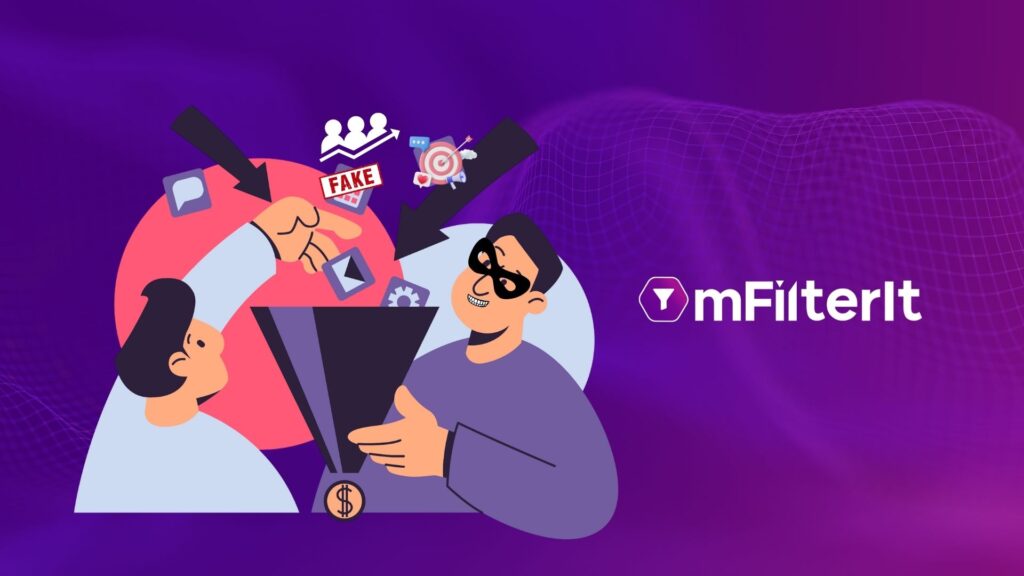Phishing is perhaps the oldest type of online fraud tactic used by scammers. Originally, phishing scams were conducted using email. However, as users on the web became more aware and alert, the effectiveness of email phishing has deteriorated considerably.
Unfortunately, this has not been enough to discourage fraudsters and scammers. Modern fraudsters have become creative and are using a variety of phishing scams to dupe unsuspecting users and brands. That’s right, phishing scams these days don’t just affect the victims. They can also hurt a brand’s reputation.
In this article, we will understand how a phishing scam can affect the trust your brand has built with its audience. We will also discuss the different tactics employed by fraudsters to deliver phishing attacks. Finally, this article will also guide you about protecting your brand against social media phishing.
Let’s jump right in:
Table of Contents
ToggleWhat Is Social Media Phishing?
Before we learn about the different techniques of social media phishing, let’s understand the basic premise of this type of scam. The main purpose of phishing is to obtain the personal information of the users. This information is then used by scammers to gain access to their financial accounts and steal their money. On social media, it has become easier than ever for scammers to conduct this type of scam.
Scammers may post a lucrative click-bait link on a platform, something like, “Here’s how this 20-year-old made $1 million in a week.” When a user clicks on this link, they may be redirected to spoofed websites that steal the personal information of the users. Since they are accessing the link through their social media account, a lot of personal identification information becomes available to the scammers.
Equipped with information like name, age, date of birth, place of birth, names of parents and spouses, and more, scammers can steal from the user. In many cases, scammers may even use someone’s personal information in other ways to gain financial benefit.
How Does Social Media Phishing Impact Brands?
Social media phishing doesn’t just impact users. Brands may feel the most considerable long-term effects of social media phishing attacks. This is because many social media phishing techniques are executed by scammers impersonating a brand or the brand’s representative.
If a user interacts with someone claiming to represent a brand they love and trust, they are likely to trust the stranger contacting them. Then, if this person turns out to be a scammer, the user will associate the bad experience with the brand.
While the brand itself is not at fault, a distressed user may not be able to understand the same. As a result, they may completely stop trusting the brand. In extreme cases, distressed victims may even start bad-mouthing the brand on social media platforms and in front of their friends. This can cause further damage to the brand reputation of the company, leading to real monetary loss in a variety of ways.
The lack of trust may directly impact the business coming from users who have fallen victim to a social media phishing scam. Moreover, if the lack of trust is spread among the larger user base, a brand may have to spend an unusually large amount on its advertising and customer experiences just to gain back the trust it has lost. Even then, there may be many users who may never place their trust in the brand again, especially those who have been directly impacted by the phishing scam.
Let’s understand the different social media phishing scams that may even impact your brand.
Most Common Types of Social Media Phishing Attacks
Fake Customer Support
Social media has emerged as a popular place to avail customer support. It is quicker and more convenient than calling a company’s helpline number. Not to forget, the generations that are now entering the consumer market also prefer communicating through texts over phone calls.
Even from a brand’s perspective, providing support on social media is a great idea. It is cost-effective and allows the brand to be prompt with its response. This, in turn, enables the brand to create more delightful customer experiences. Such experiences have a compounding effect on social media platforms where customer-brand interactions are visible publicly.
Unfortunately, it is also very easy for scammers to pose as support representatives of a brand and scam its customers. The culture of support on social media offers a glaring opportunity for committing brand infringement attacks. All they need is a fake profile equipped with the brand’s logo and a description. Using these, a scammer impersonates a legitimate brand representative and directs support-seeking customers to fake login pages that collect their personal information. This information is then used to gain access to the customer’s social media and bank accounts. The scammers then use the now-hacked social media account to scam the friends and family of their original victim.
In some cases, scammers ask for an upfront payment from customers seeking support. However, these customers simply end up falling victim to the scam and never getting the support they require. It isn’t difficult to imagine how such interactions reflect badly on a brand’s image and the trust it enjoys with its audience.
Fake Business Profiles, Pages
Just like it is easy to create a fake profile pretending to be a brand’s representative, it is also alarmingly easy to create fake company pages on social media platforms. These pages are then used by scammers to misrepresent the brand and scam unsuspecting users by asking for their personal information.
In some cases, fake business profiles may post links to fake login pages that resemble the login page of the social media platform where it is posted. An innocent user may end up clicking on such a link and thinking that they may have been logged out because of a technical issue, may enter their login details into the fake login page.
With this, the scammers can gain access to the user’s profile and start impersonating them to scam their friends.
Email Phishing
Email phishing, as the name suggests, is done by impersonating a brand in an email. This is done by making email addresses on URLs that may look like legitimate brand URLs. A famous example of this is the LinkedIn platform. It has a large variety of domain variations associated with it. Variations like el.linkedin.com or e.linkedin.com are both legit, among many others.
This makes it difficult for users to track the real ones and easy for scammers to impersonate LinkedIn officials and scam LinkedIn users via email.
How To Protect Your Brand Against Social Media Phishing?
There’s a lot that brands can do to protect their identity on social media and their audience from phishing attacks. Here are a few tips to get you started:
Monitor Social Media Activity
The most basic way to protect your brand identity is to keep a close eye on social media activity relating to it. When doing this manually, your best bet is to identify keywords relevant to your brand and keep watch on accounts and content surrounding these keywords. Then, whenever you come across a fake profile, immediately report it to the platform.
However, simply monitoring keywords may not be enough as scammers may also try to impersonate one of your employees. To make sure someone isn’t using your company’s name for malicious purposes, it is also important to watch for individual profiles that feature your brand name (or any variation).
Use Google Alerts
Google Alerts will ‘alert’ you about any activity on the web that has something to do with a specific keyword. For instance, a keyword in this case can be your brand name itself. By setting up a Google Alert for your brand name, you can easily track all the activity that mentions your brand name.
By setting up multiple similar Google Alerts, you can create a thorough monitoring system for all the activity that mentions your brand or business name, or any other relevant terms.
Reserve All Variations of Your Brand Name
Just like scammers can use variations of the LinkedIn URL to impersonate LinkedIn representatives in emails, similar steps can be taken to impersonate other brands on social media platforms.
Thankfully, the solution to this issue is simple. List all the brand name variations that may look legit if used by a scammer. Then, one by one, make accounts for all the usernames in your list. This can help you fortify your brand protection efforts to a large extent.
Get Verified
Most major social media platforms offer brands and famous personalities the ability to verify themselves and display a verification badge on their profile. On Twitter, for instance, the infamous blue tick is the verification badge.
To protect your brand’s identity on social media platforms, it is a great idea to get verified on all the platforms you use. Once the verification comes through, try to design a system where all brand-related communication is happening through the verified account. Also, inform your audience about this move and warn them against any communications coming from other accounts claiming to be representatives of your brand.
Of course, this isn’t a foolproof plan. For some brands, it may be impossible to limit all communication to a single account. Moreover, there’s also the chance that some of your users may miss your announcement regarding the same and still fall victim to a scam.
Thankfully, there is a foolproof solution to social media phishing attacks.
mFilterIt’s Brand Infringement Solution Helps to Detect and Takedown Fake Social Media Accounts
mFilterIt’s brand infringement solution is an AI and ML-powered way to enable robust brand protection on social media platforms. The solution enables constant and consistent tracking of all relevant social media platforms to detect instances of brand infringement.
Equipped with this information, brand managers and advertisers can take concrete action against impersonators and fake profiles.
Conclusion
Contrary to popular belief, the impact of social media phishing attacks isn’t limited to the victims. The brands that fall prey to identity theft are perhaps the most affected by such attacks. That’s why it is the brands that must protect their identity on social media platforms- for their interests and the sake of their customers and audiences.
While manually tracking fake accounts and pages, and subsequently reporting them is the simplest way to combat social media identity theft, it isn’t a bulletproof method. For this reason, brands must enlist the help of a solution that is designed for this exact purpose, a solution like mFilterIt’s Brand Protection Solution.
Get in touch to learn more about the Social Media Phishing Attacks.







